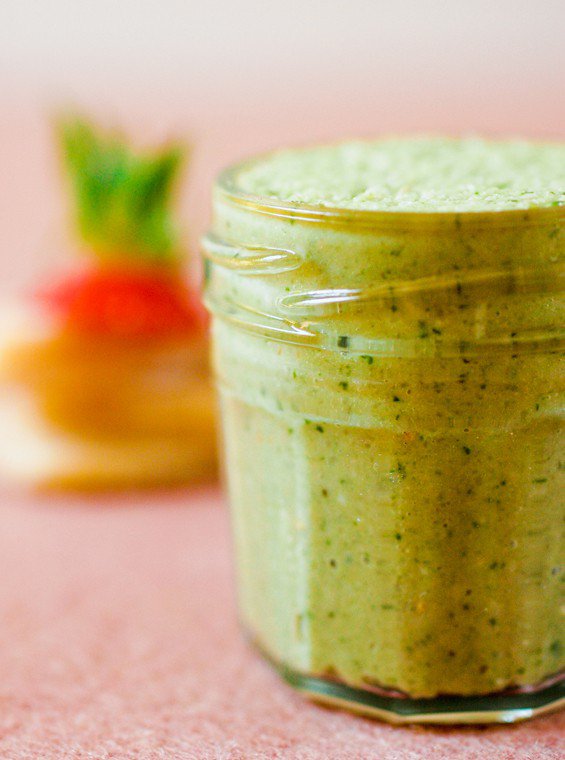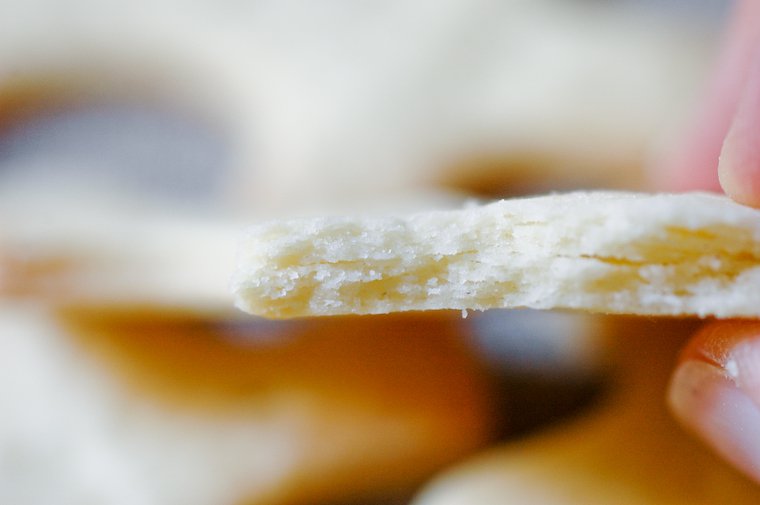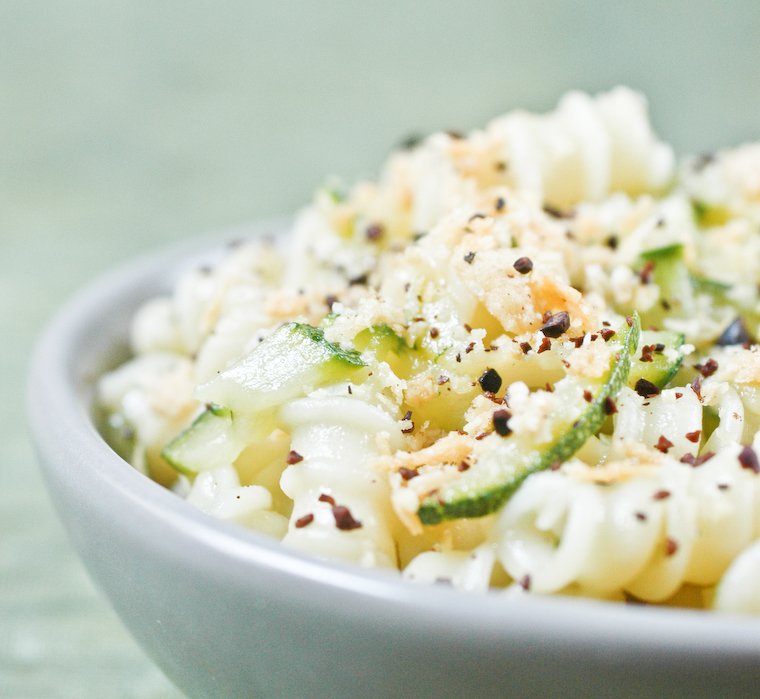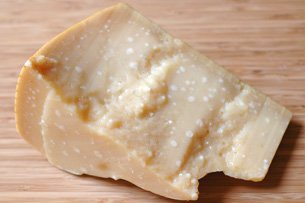What do you do when your deepest desire is a little homemade pesto in your sandwich, but you discover with a sinking heart that you have but a handful of basil? Sure, you could go out and buy more, certainly, yes, that would be the sensible thing to do. But what if you can’t go out for some reason, say, because you’ve just painted your toenails, or because you’re expecting a delivery, or perhaps both?
Well, you open the fridge, and try to think out of the box: no fresh herb to speak of, no salad green either, but there, on the lower shelf, a small basket of ruby strawberries, batting their eyelashes up at you. Strawberries from Sologne, to be exact, with an oblong shape and a tingly flavor of fraises des bois.
As a few restaurant desserts have already proven, strawberries and basil are a felicitous pairing (think chilled strawberry soup infused with basil, or sliced strawberries atop a basil sorbet) so that will do.
And while you’re at it, why not replace the pine nuts with almonds? Strawberries enjoy their company so much.
And so the strawberries join their new pals for a little ride in the mixer — the mortar and pestle method would be a bit messy, you fear. You kind of hoped the resulting pesto would be at least a little pink, but it turns out the basil won’t have it that way.
Still, the pesto is baby green with teeny flecks of pink when you look really closely, and this is pleasing enough. You taste it, and rejoice at the balance of flavors: the basil continues to dominate — it is a strong-headed herb — but the strawberries add a flowery, acidulated undertone that brightens things up nicely.
The batch doesn’t make much, but since you feel this pesto won’t keep quite as long as the traditional one — more fresh ingredients, less olive oil — it’s just as well.
Two slices of levain bread receive a light toasting and a healthy spread of pesto, upon which strips of crimson jambon de montagne (dry-cured ham) and sliced tomatoes are layered.
The sandwich is assembled, sliced in two diagonally, and heartily enjoyed, just in time for the delivery guy to ring your neighbors’ door bell — however precisely you describe which door is yours, your explanations are unfailingly misinterpreted. Perhaps it would help if you actually had your name on your door, like normal people do?









